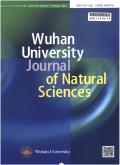Machine Learning-Based Quantitative Structure-Activity Relationship and ADMET Prediction Models for ERα Activity of Anti-Breast Cancer Drug Candidates
Q3 Multidisciplinary
引用次数: 0
Abstract
Breast cancer is presently one of the most common malignancies worldwide, with a higher fatality rate. In this study, a quantitative structure-activity relationship (QSAR) model of compound biological activity and ADMET (Absorption, Distribution, Metabolism, Excretion, Toxicity) properties prediction model were performed using estrogen receptor alpha (ERα) antagonist information collected from compound samples. We first utilized grey relation analysis (GRA) in conjunction with the random forest (RF) algorithm to identify the top 20 molecular descriptor variables that have the greatest influence on biological activity, and then we used Spearman correlation analysis to identify 16 independent variables. Second, a QSAR model of the compound were developed based on BP neural network (BPNN), genetic algorithm optimized BP neural network (GA-BPNN), and support vector regression (SVR). The BPNN, the SVR, and the logistic regression (LR) models were then used to identify and predict the ADMET properties of substances, with the prediction impacts of each model compared and assessed. The results reveal that a SVR model was used in QSAR quantitative prediction, and in the classification prediction of ADMET properties: the SVR model predicts the Caco-2 and hERG(human Ether-a-go-go Related Gene) properties, the LR model predicts the cytochrome P450 enzyme 3A4 subtype (CYP3A4) and Micronucleus (MN) properties, and the BPNN model predicts the Human Oral Bioavailability (HOB) properties. Finally, information entropy theory is used to validate the rationality of variable screening, and sensitivity analysis of the model demonstrates that the constructed model has high accuracy and stability, which can be used as a reference for screening probable active compounds and drug discovery.基于机器学习的癌症候选药物ERα活性定量构效关系及ADMET预测模型
癌症是目前世界上最常见的恶性肿瘤之一,死亡率较高。在本研究中,利用从化合物样品中收集的雌激素受体α(ERα)拮抗剂信息,建立了化合物生物活性的定量构效关系(QSAR)模型和ADMET(吸收、分布、代谢、排泄、毒性)特性预测模型。我们首先利用灰色关联分析(GRA)和随机森林(RF)算法来识别对生物活性影响最大的前20个分子描述符变量,然后我们使用Spearman相关分析来识别16个自变量。其次,基于BP神经网络、遗传算法优化BP神经网络和支持向量回归建立了该化合物的QSAR模型。然后使用BPNN、SVR和逻辑回归(LR)模型来识别和预测物质的ADMET特性,并对每个模型的预测影响进行比较和评估。结果表明,SVR模型用于QSAR定量预测和ADMET特性的分类预测:SVR模型预测Caco-2和hERG(人Ether-a-go-go相关基因)特性,LR模型预测细胞色素P450酶3A4亚型(CYP3A4)和微核(MN)特性,并且BPNN模型预测人类口腔生物利用度(HOB)特性。最后,利用信息熵理论验证了变量筛选的合理性,对模型的敏感性分析表明,所构建的模型具有较高的准确性和稳定性,可为筛选可能的活性化合物和药物发现提供参考。
本文章由计算机程序翻译,如有差异,请以英文原文为准。
求助全文
约1分钟内获得全文
求助全文
来源期刊

Wuhan University Journal of Natural Sciences
Multidisciplinary-Multidisciplinary
CiteScore
0.40
自引率
0.00%
发文量
2485
期刊介绍:
Wuhan University Journal of Natural Sciences aims to promote rapid communication and exchange between the World and Wuhan University, as well as other Chinese universities and academic institutions. It mainly reflects the latest advances being made in many disciplines of scientific research in Chinese universities and academic institutions. The journal also publishes papers presented at conferences in China and abroad. The multi-disciplinary nature of Wuhan University Journal of Natural Sciences is apparent in the wide range of articles from leading Chinese scholars. This journal also aims to introduce Chinese academic achievements to the world community, by demonstrating the significance of Chinese scientific investigations.
 求助内容:
求助内容: 应助结果提醒方式:
应助结果提醒方式:


